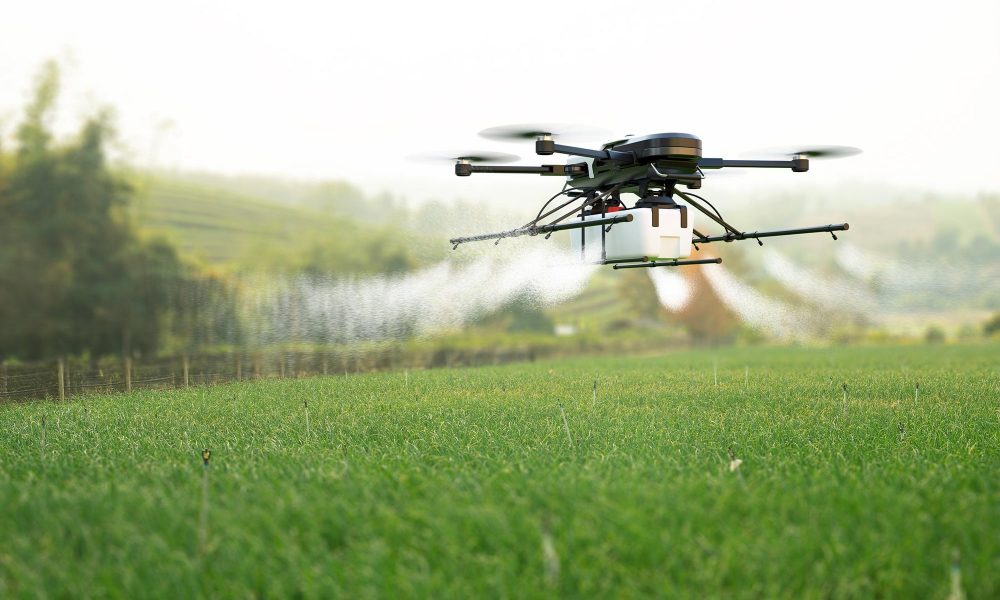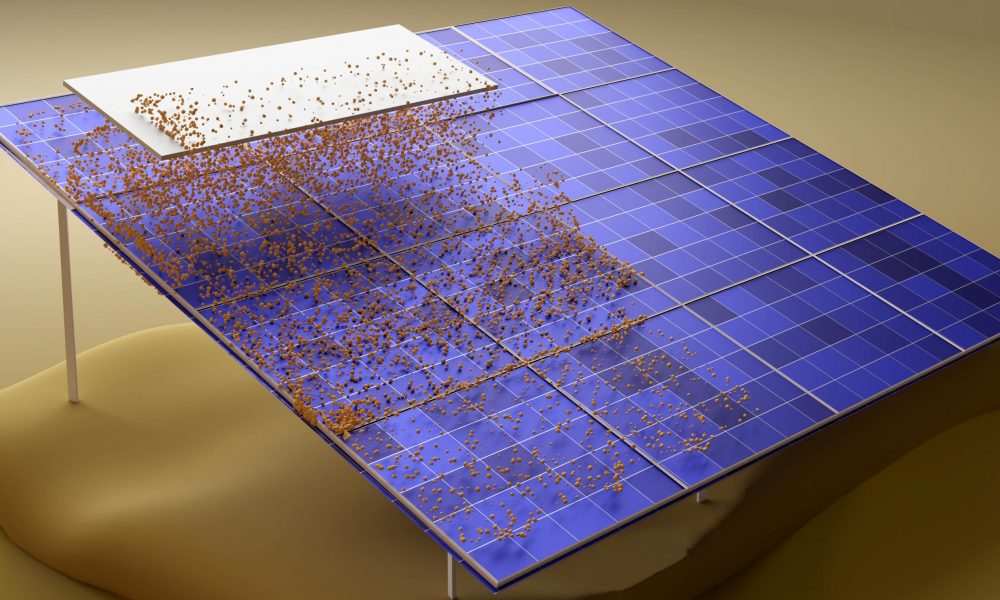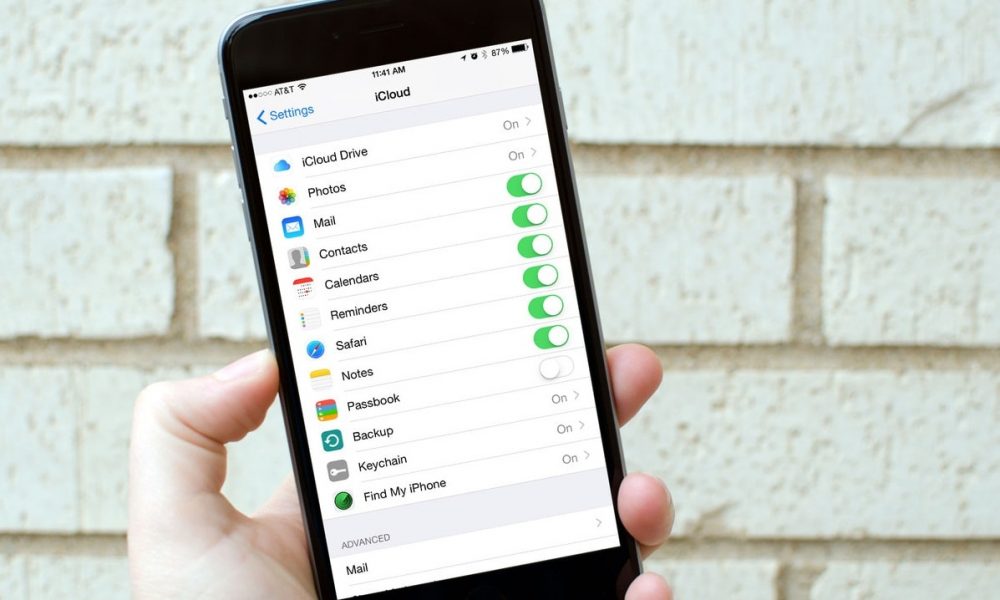Although Netflix is one of the best streaming services in India, one cannot ignore the fact that it is also one of the most expensive platforms. So if you’re looking to save on streaming services, Netflix tops the list. If you are also planning to save money, here is how you can cancel your Netflix subscription now. Also Read – Netflix Saves 195 Years a Day Using Skip Intro Button: The Story Behind the Feature How to cancel your Netflix subscription Open the Netflix app on your smartphone and tap the profile icon in the top right. Go to the “Account” section. Scroll down and tap on the “Cancel Membership” option. You will be taken to the Cancel Plan page. Tap on the “Complete Cancellation” option. In layman’s terms, if you cancel the remaining subscription period during the billing period, you can use Netflix until the end of the billing period. To check the plan renewal date, you need to visit the Accounts section by following the above steps and then tap on the Billing Details option. You will see the “Next billing date”, “Plan” and other billing details. Also Read – Netflix Knows When You’ve Shared Your Password, and Now Wants You to Pay for It If you plan to rejoin Netflix after a while, you’ll see your viewing activity for the last 10 months before you canceled the subscription. According to Netflix, “available for 10 months are: Also Read – Top Crime Series/Movies to Watch on Netflix, Amazon Prime Video & More Your recommendations reviews account details history of the game Game saves (as long as the game and game data have not been deleted from your device) To bring you up to speed, Netflix is testing a way to crack down on the practice of password sharing among friends and family members who don’t live in the same household by requiring them to pay an additional fee. The two features the streaming platform is testing are Add Additional Member and Transfer Profile to New Account. Netflix said it plans to test these features in Chile, Costa Rica and Peru and that they will be available to its users in those countries in the coming days.
How to permanently hide chats in WhatsApp: Follow these simple steps
To hide one of your chats in WhatsApp, you can archive it and keep it hidden forever. Even if new messages come in, they remain hidden. Often such chats are kept in the WhatsApp mailbox, which are of no use to us. This feature of WhatsApp allows you to keep chats hidden for as long as you want. Also read – Poco M4 Pro Review: No 5G, but a lot more Also read – A special edition of the first-ever Marvel comic fetched over 2.4 million at auction To hide chat: Step 1: Open WhatsApp, select the chat you want to archive. Also read – OnePlus 8 series, 9R get Android 12 with OxygenOS 12 update Step 2: The above three options will appear. Pin, mute and archive. Click the Archive button. Step 3: The Archive section will appear at the top of your chat feed. You can always go to the section and view your hidden chats. Step 4: Users can unarchive the chat by selecting the chat and clicking on the Unarchive option. Step 5: If you want to archive all chats, go to Chats tab Step 6: Tap More and then go to Settings. Step 7: Tap on Chats Step 8: Go to chat history Step 9: Now archive all chats. Image: Pixabay To bring back chat: First, open WhatsApp. Now scroll to the bottom of the Chats screen. Here you will see the Archived option. Tap on it. Now long press on the chat and tap on the “Remove Archive” icon.
Risks of Using AI To Grow Our Food Are Substantial and Must Not Be Ignored
Drone sprays pesticides on wheat fields. Artificial intelligence (AI) is on the cusp of fueling an agricultural revolution and helping to meet the challenge of sustainably feeding our growing world population. However, researchers warn that deploying new AI technologies at scale poses huge risks that are not being considered. Imagine a field of wheat stretching to the horizon, grown for flour that is made into bread to feed the people of the cities. Imagine that all the authority to till, plant, fertilize, monitor and harvest this field has been delegated to artificial intelligence: algorithms that control drip irrigation systems, self-propelled tractors and combines intelligent enough to anticipate the weather and the environment respond to the exact needs of the culture. Then imagine a hacker messing things up. “The idea of intelligent machines running farms is not science fiction.” — Asaf Tzachor A new risk analysis recently published in the journal Nature Machine Intelligencewarns that the future use of artificial intelligence in agriculture poses significant potential risks to farms, farmers and food security that are poorly understood and underestimated. “The idea of intelligent machines running farms is not science fiction. Big companies are already pioneering the next generation of autonomous Ag-Bots and decision support systems that will replace humans in the field,” said Dr. Asaf Tzachor of the University of Cambridge’s Center for the Study of Existential Risk (CSER), first author of the paper. “But so far no one seems to have asked the question, ‘Are there any risks associated with rapid deployment of agricultural AI?’” he added. Despite the great promise of AI to improve crop management and agricultural productivity, potential risks need to be responsibly addressed and new technologies need to be properly tested in experimental environments to ensure they are safe and protected from accidental failures, unintended consequences and cyberattacks, say the authors say. In their research, the authors have developed a catalog of risks that must be taken into account in the responsible development of AI for agriculture – and ways to counter them. In it, they sound the alarm about cyber attackers who may be disrupting commercial AI farms by poisoning data sets or shutting down sprayers, autonomous drones and robotic harvesters. To prevent this, they suggest that “white hat hackers” help companies uncover security flaws during the development phase so systems can be protected from real hackers. In a scenario involving accidental failure, the authors suggest that an AI system programmed only to produce the best crop yield in the short term could ignore the associated environmental consequences, leading to overuse of fertilizers in the long term and could lead to soil erosion. Overuse of pesticides in pursuit of high yields could poison ecosystems; Excessive application of nitrogen fertilizer would pollute the soil and surrounding waters. The authors suggest involving applied ecologists in the technology design process to ensure these scenarios are avoided. Autonomous machines could improve the working conditions of farmers and relieve them of manual work. But without inclusive technology design, socioeconomic inequalities currently ingrained in global agriculture—including gender, class, and ethnic discrimination—will persist. “Skilled AI farming systems that do not take into account the complexities of labor input will ignore and potentially perpetuate the exploitation of disadvantaged communities,” Tzachor warned. Various Ag-Bots and advanced machines such as drones and sensors are already being used to collect information about crops and support farmers’ decision-making: for example to detect diseases or insufficient irrigation. And self-propelled combines can bring in a crop without the need for a human operator. Such automated systems aim to make farming more efficient, save labor costs, optimize production and minimize losses and waste. This leads to increased income for farmers as well as greater reliance on farming AI. However, small farmers, who run the majority of farms worldwide and feed large parts of the so-called Global South, are likely to be left out of AI-related benefits. Marginalization, poor internet penetration rates, and the digital divide may prevent small farmers from taking advantage of advanced technologies, widening the gap between commercial and subsistence farmers. With an estimated two billion people affected by food insecurity, including some 690 million malnourished and 340 million children with micronutrient deficiencies, artificial intelligence technologies and precision agriculture promise significant food security benefits in the face of climate change and a growing world population. “AI is being hailed as a way to revolutionize farming. As we are using this technology extensively, we should carefully consider potential risks and aim to mitigate them early in the technology design,” said Dr. Seán Ó hÉigeartaigh, Executive Director of CSER and co-author of the new study. Reference: “Responsible artificial intelligence in agriculture requires a systemic understanding of risks and externalities” by Asaf Tzachor, Medha Devare, Brian King, Shahar Avin and Seán Ó hÉigeartaigh, February 23, 2022, Nature Machine Intelligence.DOI: 10.1038/s42256-022-00440-4 This research was funded by Templeton World Charity Foundation, Inc.
MIT’s Clever Way To Clean Solar Panels Without Water
Through David L. Chandler, Massachusetts Institute of Technology March 18, 2022 Dust that accumulates on solar panels is a big problem, but washing the panels uses huge amounts of water. MIT engineers have now developed a waterless cleaning method to remove dust on solar arrays in water-limited regions, thereby improving overall efficiency. Credit: Courtesy of the researchers A new cleaning method could remove dust on solar arrays in arid regions, improving overall efficiency. Solar power is expected to reach 10 percent of global electricity generation by 2030, and much of that will likely be in desert areas where sunlight is plentiful. But dust accumulation on solar panels or mirrors is already a significant problem — it can reduce photovoltaic panel performance by up to 30 percent in just a month — so regular cleaning is essential for such installations. But cleaning solar panels is currently estimated to use about 10 billion gallons of water a year — enough to provide drinking water for up to 2 million people. Attempts at waterless cleaning are labor intensive and tend to cause irreversible scratching of surfaces, which also reduces efficiency. Now has a research team[{” attribute=””>MIT has devised a way of automatically cleaning solar panels, or the mirrors of solar thermal plants, in a waterless, no-contact system that could significantly reduce the dust problem, they say. The new system uses electrostatic repulsion to cause dust particles to detach and virtually leap off the panel’s surface, without the need for water or brushes. To activate the system, a simple electrode passes just above the solar panel’s surface, imparting an electrical charge to the dust particles, which are then repelled by a charge applied to the panel itself. The system can be operated automatically using a simple electric motor and guide rails along the side of the panel. The research is described on March 11, 2022, in the journal Science Advances, in a paper by MIT graduate student Sreedath Panat and professor of mechanical engineering Kripa Varanasi. Despite concerted efforts worldwide to develop more and more efficient solar panels, says Varanasi, “an everyday problem like dust can seriously affect the whole thing.” Laboratory tests conducted by Panat and Varanasi showed that the drop in energy output from the panels started at the very beginning of the process of dust accumulation occurs steeply and can easily achieve a 30 percent reduction after just one month without cleaning. Even a 1 percent reduction in output from a 150 megawatt solar array could result in a $200,000 loss in annual revenue. The researchers say that reducing solar power output by 3 to 4 percent worldwide would result in a loss of between $3.3 billion and $5.5 billion. “There’s so much work being done on solar materials,” says Varanasi. “You’re pushing the envelope, trying to snag a few percent here and there in improving efficiency, and here you have something that can wipe out all of that in an instant.” Many of the world’s largest solar power plants, including those in China, India, the United Arab Emirates and the US, are located in desert regions. The water used to clean these solar panels with pressurized water jets must be supplied remotely and must be very pure so as not to leave deposits on the surfaces. Dry scrubbing is sometimes used but is less effective at cleaning surfaces and can cause permanent scratches that also reduce light transmission. Water purification accounts for about 10 percent of the operating costs of solar systems. The new system could potentially reduce those costs while improving overall performance by allowing for more frequent automated cleanings, the researchers say. The new system uses electrostatic repulsion to cause dust particles to detach and pop off the surface of the disc with virtually no water or brushing required. Credit: Courtesy of the researchers “The water footprint of the solar industry is amazing,” says Varanasi, and it’s set to increase as these installations continue to expand around the world. “So the industry has to be very careful and thought out how to make this a sustainable solution.” Other groups have attempted to develop electrostatic-based solutions, but these have relied on a layer called an electrodynamic screen that uses interdigitated electrodes. These screens can have defects that allow moisture in and lead to failure, says Varanasi. While they might come in handy in a place like[{” attribute=””>Mars, he says, where moisture is not an issue, even in desert environments on Earth this can be a serious problem. The new system they developed only requires an electrode, which can be a simple metal bar, to pass over the panel, producing an electric field that imparts a charge to the dust particles as it goes. An opposite charge applied to a transparent conductive layer just a few nanometers thick deposited on the glass covering of the the solar panel then repels the particles, and by calculating the right voltage to apply, the researchers were able to find a voltage range sufficient to overcome the pull of gravity and adhesion forces, and cause the dust to lift away. Using specially prepared laboratory samples of dust with a range of particle sizes, experiments proved that the process works effectively on a laboratory-scale test installation, Panat says. The tests showed that humidity in the air provided a thin coating of water on the particles, which turned out to be crucial to making the effect work. “We performed experiments at varying humidities from 5 percent to 95 percent,” Panat says. “As long as the ambient humidity is greater than 30 percent, you can remove almost all of the particles from the surface, but as humidity decreases, it becomes harder.” Varanasi says that “the good news is that when you get to 30 percent humidity, most deserts actually fall in this regime.” And even those that are typically drier than that tend to have higher humidity in the early morning hours, leading to dew formation, so the cleaning could be timed accordingly. “Moreover, unlike some
How to turn it on
If you’re wondering why you can’t access your account today, it’s probably because you haven’t activated Facebook Protect in your account yet. In early March, Facebook began sending an email titled “Your account requires advanced security from Facebook Protect” to select users, urging them to enable Facebook Protect in their accounts by a specific date or else they are at risk of being locked out of their accounts. Also Read – Australia Sues Facebook Owner Meta Over Cryptocurrency Fraud The Verge notes that the email came from the address – security@facebookmail.com – which resembles a common form of spam mail and was therefore ignored by many users. As it turned out, the email wasn’t spam. It was Facebook trying to contact the high-risk users to protect their accounts until March 17th to protect themselves from being locked out of their accounts. Now, those people who didn’t turn on Facebook Protect before the deadline are getting messages about why they can’t access their accounts and what they need to do next. Also Read – Meta Removes Deepfake Video Of Ukrainian President Zelensky: What Are Deepfakes, What Are They Used For? However, things are not that simple. There have been reports on Twitter that Facebook users who have been banned from their accounts have been banned before the deadline despite enabling the feature. Also Read – Judge, Jury, Executioner: Facebook Tries to Be Everything, But Why? I was banned from Facebook indefinitely today for not responding to emails from FB (which looked like a scam) about their new Facebook Protect system, which I had to activate until today. So far, the text and security key options are not working, many are reporting. pic.twitter.com/0aXbiqzLv7 — Liv. (@Olivia_Thiessen) March 18, 2022 Some users have also reported technical issues retrieving their text-based two-factor authentication codes on their phones. Anyone else having major issues with Facebook Protect? Completely banned from my account. Then glitches and technical problems occur when you try to fix the problem 😑😑😑😑 — Simone DeAlba (@Simone_DeAlba) March 18, 2022 Notably, Meta announced back in December last year that it would soon require its highest-risk users to protect their accounts with two-factor authentication. At the time, the company said its high-risk users, which include select journalists, human rights activists, government officials and other users who could be targeted by cybercriminals, enabled a feature called Facebook Protect on their profiles. If you haven’t activated Facebook Protect in your account yet, here are step-by-step instructions on what to do: How to enable Facebook Protect on your account Step 1: On Facebook, click the down arrow on the top right corner. Step 2: Click Settings & Privacy and then click Settings. Step 3: Click on Security and Login. Step 4: Under Facebook Protect, click Get Started. Step 5: On the welcome screen, click Next. Step 6: On the Facebook Protect benefits screen, click Next. Step 7: After that, Facebook will scan your account for potential vulnerabilities and make suggestions on what can be fixed if you enable Facebook Protect. Step 8: Click Fix Now and follow the on-screen instructions to finish enabling Facebook Protect.
New “Acoustic Fabric” Hears Your Heart’s Sounds
An MIT team has designed an “acoustic fabric” woven from a fiber composed of a “piezoelectric” material that produces an electrical signal when flexed or mechanically deformed, causing the fabric to convert sound vibrations into electrical signals can. Photo credit: Greg Hren Inspired by the human ear, a new acoustic fabric converts audible sounds into electrical signals. Having trouble hearing? Just unfold your shirt. That’s the idea behind a new “acoustic fabric” developed by engineers at[{” attribute=””>MIT and collaborators at Rhode Island School of Design. The team has designed a fabric that works like a microphone, converting sound first into mechanical vibrations, then into electrical signals, similarly to how our ears hear. All fabrics vibrate in response to audible sounds, though these vibrations are on the scale of nanometers — far too small to ordinarily be sensed. To capture these imperceptible signals, the researchers created a flexible fiber that, when woven into a fabric, bends with the fabric like seaweed on the ocean’s surface. The fiber is designed from a “piezoelectric” material that produces an electrical signal when bent or mechanically deformed, providing a means for the fabric to convert sound vibrations into electrical signals. The fabric can capture sounds ranging in decibel from a quiet library to heavy road traffic, and determine the precise direction of sudden sounds like handclaps. When woven into a shirt’s lining, the fabric can detect a wearer’s subtle heartbeat features. The fibers can also be made to generate sound, such as a recording of spoken words, that another fabric can detect. The team wove the fiber with yarns to produce panels of drapable, machine-washable fabric. Credit: Greg Hren A study detailing the team’s design was published on March 16, 2022, in Nature. Lead author Wei Yan, who helped develop the fiber as an MIT postdoc, sees many uses for fabrics that hear. “Wearing an acoustic garment, you might talk through it to answer phone calls and communicate with others,” says Yan, who is now an assistant professor at the Nanyang Technological University in Singapore. “In addition, this fabric can imperceptibly interface with the human skin, enabling wearers to monitor their heart and respiratory condition in a comfortable, continuous, real-time, and long-term manner.” Yan’s co-authors include Grace Noel, Gabriel Loke, Tural Khudiyev, Juliette Marion, Juliana Cherston, Atharva Sahasrabudhe, Joao Wilbert, Irmandy Wicaksono, and professors John Joannopoulos and Yoel Fink at MIT, along with Anais Missakian and Elizabeth Meiklejohn at Rhode Island School of Design (RISD), Lei Zhu from Case Western Reserve University, Chu Ma from the University of Wisconsin at Madison, and Reed Hoyt of the U.S. Army Research Institute of Environmental Medicine. Sound layering Fabrics are traditionally used to dampen or reduce sound; examples include soundproofing in concert halls and carpeting in our living spaces. But Fink and his team have worked for years to refashion fabric’s conventional roles. They focus on extending properties in materials to make fabrics more functional. In looking for ways to make sound-sensing fabrics, the team took inspiration from the human ear. Audible sound travels through air as slight pressure waves. When these waves reach our ear, an exquisitely sensitive and complex three-dimensional organ, the tympanic membrane, or eardrum, uses a circular layer of fibers to translate the pressure waves into mechanical vibrations. These vibrations travel through small bones into the inner ear, where the cochlea converts the waves into electrical signals that are sensed and processed by the brain. The acoustic fiber can be woven with conventional yarns using a traditional loom. Credit: Courtesy of the Fink Lab Inspired by the human auditory system, the team sought to create a fabric “ear” that would be soft, durable, comfortable, and able to detect sound. Their research led to two important discoveries: Such a fabric would have to incorporate stiff, or “high-modulus,” fibers to effectively convert sound waves into vibrations. And, the team would have to design a fiber that could bend with the fabric and produce an electrical output in the process. With these guidelines in mind, the team developed a layered block of materials called a preform, made from a piezoelectric layer as well as ingredients to enhance the material’s vibrations in response to sound waves. The resulting preform, about the size of a thick marker, was then heated and pulled like taffy into thin, 40-meter-long fibers. Lightweight listening The researchers tested the fiber’s sensitivity to sound by attaching it to a suspended sheet of mylar. They used a laser to measure the vibration of the sheet — and by extension, the fiber — in response to sound played through a nearby speaker. The sound varied in decibel between a quiet library and heavy road traffic. In response, the fiber vibrated and generated an electric current proportional to the sound played. “This shows that the performance of the fiber on the membrane is comparable to a handheld microphone,” Noel says. In addition to wearable hearing aids, clothes that communicate, and garments that track vital signs, acoustic fabrics serve as dust-sensing spacecraft skin, and crack-detecting building coverings. Credit: Courtesy of the Fink Lab Next, the team wove the fiber with conventional yarns to produce panels of drapable, machine-washable fabric. “It feels almost like a lightweight jacket — lighter than denim, but heavier than a dress shirt,” says Meiklejohn, who wove the fabric using a standard loom. She sewed one panel to the back of a shirt, and the team tested the fabric’s sensitivity to directional sound by clapping their hands while standing at various angles to the shirt. “The fabric was able to detect the angle of the sound to within 1 degree at a distance of 3 meters away,” Noel notes. The researchers envision that a directional sound-sensing fabric could help those with hearing loss to tune in to a speaker amid noisy surroundings. Two panels of acoustic fabric sewed to the back of a dress shirt are able to determine the direction of sudden sounds such as handclaps. Credit: Courtesy of the Fink Lab The team
How to access and download iCloud photos from your PC
The iCloud account makes it possible to sync all Apple devices and transfer files seamlessly. The iCloud account can also be used to access content from your Windows PC. Also Read: Google’s Switch to Android iOS App May Allow Direct Import from iCloud to Google Photos All you have to do is open the iCloud website or iCloud for Windows utility and follow a few simple steps. In case you want to download or backup all photos from iCloud to PC for later use, here is a step-by-step guide for you to check. Also Read- iPhone Holi Exchange Offer: How to Get iPhone 13, iPhone 12 at Only Rs 32,000 How to access iCloud photos from PC -Open the iCloud website on your Windows PC and sign in to www.iCloud.com with your Apple ID. Make sure you’re entering the same Apple ID credentials you use for your iCloud Photo Library. Also Read – Microsoft Xbox Cloud Gaming Gets Better on iPhone and iPad -Click the Photos icon. And this will load your iCloud Photo Library. – You can see all your photos from all your iCloud enabled devices once the Photos section loads. – In case you have tons of photos in iCloud and want to save them all, hold Shift + Ctrl + Alt keys and press down arrow key to select the entire catalog from iCloud. – Once selected, click the download icon next to the “Delete” option to start downloading all iCloud photos to your computer. -If you haven’t changed the default settings, all iCloud photos will be downloaded to the Downloads folder on your PC. You can also download the iCloud for Windows installer. Upon installation, your iCloud photos are synced to a special folder on your computer. It will basically help you access the photos like any other file on your PC.
CoinSwitch partners with new app for virtual Holi 2022
Holi celebrations are a time to get together, but many will still not be able to join their family or loved ones to play Holi. Few Indian companies have pushed Metaverse as a solution to this problem. While many major tech companies based outside of India have used the platform for launch events and more, it is the first time an Indian festival has been hosted at the Metaverse. Also read – How to clean your smartphone and other electronic devices after Holi CoinSwitch is Yug Metaverse’s fintech partner for Holi 2022 celebration. The companies claimed in a joint statement that this is the world’s first Metaverse Holi. Also Read – Call of Duty Mobile Announces New Free Holi Rewards: How to Claim Them “Holi is a celebration of colour, friendship and love. CoinSwitch is excited to partner with Yug to bring this joyful Indian tradition to the Metaverse. At CoinSwitch, the customer experience is at the heart of everything we do. We want to actively help shape how Indians deal with future technologies. Metaverse Holi is a perfect blend of our rich heritage and technological prowess,” said Ashish Singhal, Founder and CEO of CoinSwitch. Also Read – Holi Sale Offers: Vivo Announce Cashback Offers of up to Rs 3,500 on Vivo V23 Series “We have always seen Western festivals celebrated on games and metaverses, and we wished that festivals like Holi, which is a festival of colors, should also be celebrated. So we created the world’s first Holi experience in Metaverse for people to enjoy. Here people can come and play Holi with friends and enjoy DJ and dancing. We believe people can have a good experience with digital Holi. We’ve been working to make it a safe environment,” said Utkarsh Shukla, Founder and CEO of YUG Metaverse. How to play Holi in Metaverse User can download Yug Metaverse app on Google Play Store or Apple App Store. You then need to create an account in the app. From there you can create your own avatar. The Metaverse has a total of three venues as of the writing of this article. One of the three venues is Holi. Once you have selected the Holi 2022 venue, you will be taken to a download page to prepare the files. Once this is complete you should be playing Holi in the Metaverse. Note: The app is in alpha testing phase, it may not be the smoothest experience.
Building a Silicon Quantum Computer Chip Atom by Atom
Illustration of single atom technology. (Cropped – click image for full view.) Credit: David Jamieson, University of Melbourne atom of[{” attribute=””>atom: new silicon computer chip technique opens up quantum computing construction possibilities. Quantum computers could be constructed cheaply and reliably using a new technique perfected by a University of Melbourne-led team that embeds single atoms in silicon wafers, one-by-one, mirroring methods used to build conventional devices, in a process outlined in an Advanced Materials paper. The new technique – developed by Professor David Jamieson and co-authors from UNSW Sydney, Helmholtz-Zentrum Dresden-Rossendorf (HZDR), Leibniz Institute of Surface Engineering (IOM), and RMIT – can create large scale patterns of counted atoms that are controlled so their quantum states can be manipulated, coupled and read-out. Lead author of the paper, Professor Jamieson said his team’s vision was to use this technique to build a very, very large-scale quantum device. “We believe we ultimately could make large-scale machines based on single atom quantum bits by using our method and taking advantage of the manufacturing techniques that the semiconductor industry has perfected,” Professor Jamieson said. The technique uses the precision of the atomic force microscope, which has a sharp cantilever that ‘touches’ the surface of a chip with one positioning.[{” attribute=””>accuracy of just half a nanometre, about the same as the spacing between atoms in a silicon crystal. The team drilled a tiny hole in this cantilever, so that when it was showered with phosphorus atoms one would occasionally drop through the hole and embed in the silicon substrate. The key was knowing precisely when one atom – and no more than one – had become embedded in the substrate. Then the cantilever could move to the next precise position on the array. The team discovered that the kinetic energy of the atom as it plows into the silicon crystal and dissipates its energy by friction can be exploited to make a tiny electronic “click.” First author Dr Alexander (Melvin) Jakob stands in front of the nanostencil scanner. Credit: University of Melbourne Professor Jamieson said the team could “hear” the electronic click as each atom dropped into one of the 10,000 sites in the prototype device. “One atom colliding with a piece of silicon makes a very faint click, but we have invented very sensitive electronics used to detect the click, it’s much amplified and gives a loud signal, a loud and reliable signal,” Professor Jamieson said. “That allows us to be very confident of our method. We can say, ‘Oh, there was a click. An atom just arrived. Now we can move the cantilever to the next spot and wait for the next atom,’” Professor Jamieson said. Until now, implanting atoms in silicon has been a haphazard process, where a silicon chip gets showered with phosphorus which implants in a random pattern, like raindrops on a window. Co-author, Scientia Professor Andrea Morello from the University of New South Wales said the new technique embedded phosphorus ions, precisely counting each one, in a silicon substrate creating a qubit “chip,” which can then be used in lab experiments to test designs for large scale devices. “This will allow us to engineer the quantum logic operations between large arrays of individual atoms, retaining highly accurate operations across the whole processor,” Professor Morello said. “Instead of implanting many atoms in random locations and selecting the ones that work best, they will now be placed in an orderly array, similar to the transistors in conventional semiconductors computer chips.” Lead author Prof David Jamieson at the University of Melbourne. Credit: University of Melbourne First author, University of Melbourne’s Dr. Alexander (Melvin) Jakob said highly specialized equipment was used for the collaboration. “We used advanced technology developed for sensitive x-ray detectors and a special atomic force microscope originally developed for the Rosetta space mission along with a comprehensive computer model for the trajectory of ions implanted into silicon, developed in collaboration with our colleagues in Germany,” Dr. Jakob said. “With our Centre partners, we have already produced ground-breaking results on single atom qubits made with this technique, but the new discovery will accelerate our work on large-scale devices.” Practical implications of quantum computers include new ways of optimizing timetable and finances, unbreakable cryptography and computational drug design, and potentially the rapid development of vaccines. Reference: “Deterministic Shallow Dopant Implantation in Silicon with Detection Confidence Upper-Bound to 99.85% by Ion–Solid Interactions” by Alexander M. Jakob, Simon G. Robson, Vivien Schmitt, Vincent Mourik, Matthias Posselt, Daniel Spemann, Brett C. Johnson, Hannes R. Firgau, Edwin Mayes, Jeffrey C. McCallum, Andrea Morello and David N. Jamieson, 11 October 2021, Advanced Materials.DOI: 10.1002/adma.202103235 Co-authors on the report are from UNSW Sydney, Helmholtz-Zentrum Dresden-Rossendorf (HZDR), Leibniz Institute of Surface Engineering (IOM), and RMIT’s Microscopy and Microanalysis Facility. The project was funded by the Australian Research Council Centre of Excellence for Quantum Computation and Communication Technology, the US Army Research Office, a grant from the University of Melbourne Research and Infrastructure Fund and used the facilities of the Australian National Fabrication Facility at the Melbourne Centre for Nanofabrication.
BPCL to allow customers to pay digitally using their voice: Here’s how
Bharat Petroleum Corporation Limited (BPCL) has partnered with a company called UltraCash Technologies to offer voice-based digital payment functionality to consumers of BharatGas. Buyers can now book their LPG cylinders by voice. In addition, people without a smartphone or internet can easily book their bottles and even pay digitally with UPI 123Pay. The new payment method was launched by RBI earlier this month. Around 4 million consumers of BharatGas can benefit from this new facility. Also Read – BPCL Launches EV Fast Charging Corridor on India’s Major Highway: Check the Details BPCL claims it is the first company in India to offer the new service after the RBI governor announced the launch of UPI 123PAY. BPCL has partnered with UltraCash, a mobile payment application developed and authorized by the National Payment Corporation of India (NPCI). How do I book a bottle with Ultra Cash? Bharat Gas customers can call the common number 08045163554 from a non-internet phone and book BharatGas cylinders for themselves or for their friends in simple steps. According to BPCL, more than 13,000 BharatGas customers made transactions worth more than Rs 1 crore in the month leading up to the launch, suggesting that transactions worth Rs 100 crore could take place in the next 12 months. Santosh Kumar, Executive Director Incharge (LPG) of BPCL said: “In India there is still a large majority of feature phone users. In addition, many users, even in urban areas, are looking for completely safe ways to make digital payments. As the Government of India is also promoting the use of LPG through schemes such as Ujjwala yojana, this facility will help to penetrate further into rural markets. While this service can be used by anyone, it is primarily intended for non-feature phone users, but the simplicity and security of UPI123PAY’s payments will make it popular across all segments and users. So BharatGas enables a service that is truly dedicated to BHARAT.” Vishal Lal, Co-Founder of UltraCash said: “We are extremely excited to partner with BPCL on this amazing journey to bring the next group of customers into the digital revolution. This groundbreaking initiative by RBI and NPCI enables customers to pay and book in the simplest form of a voice call.”












